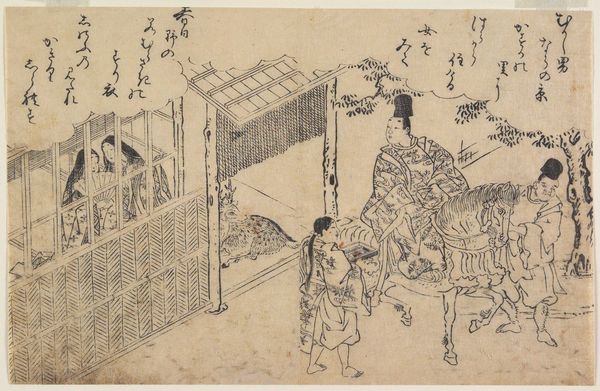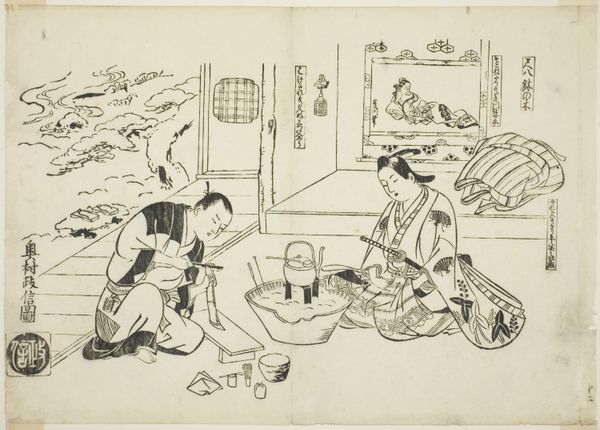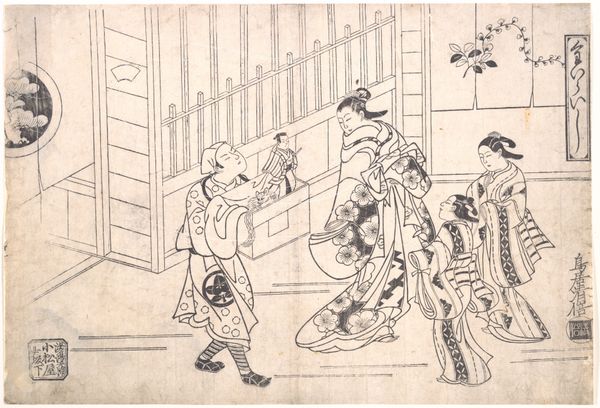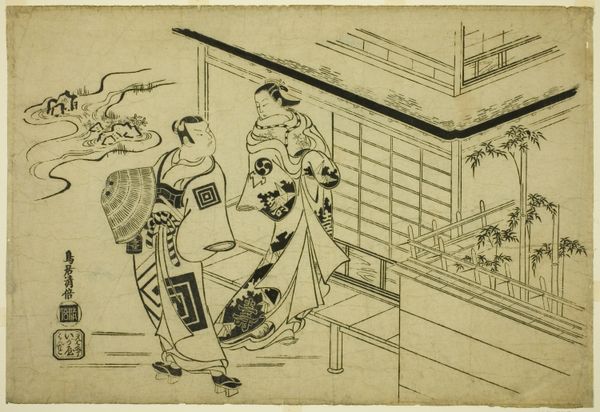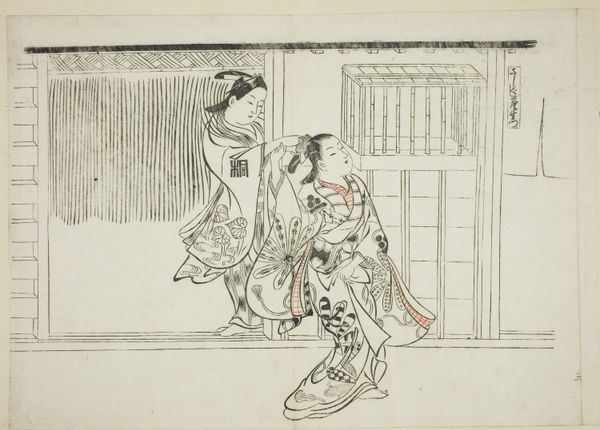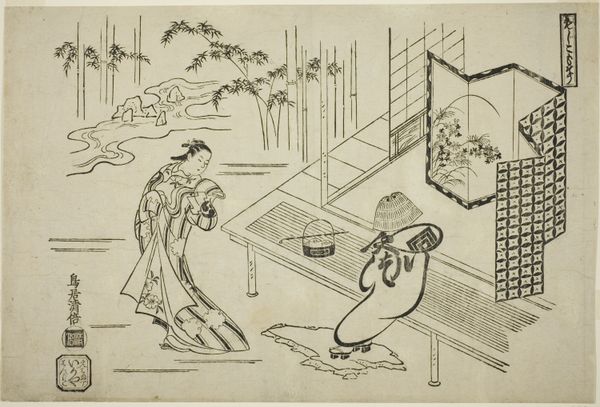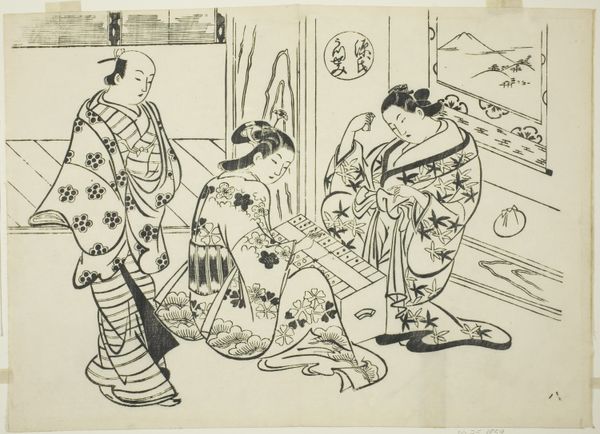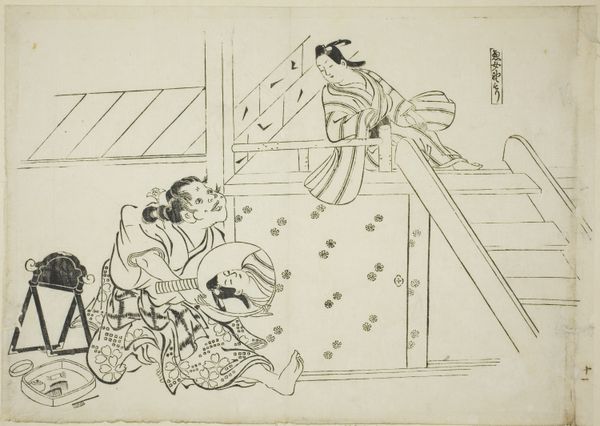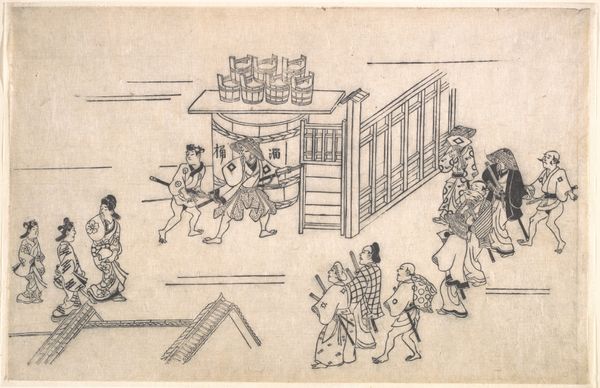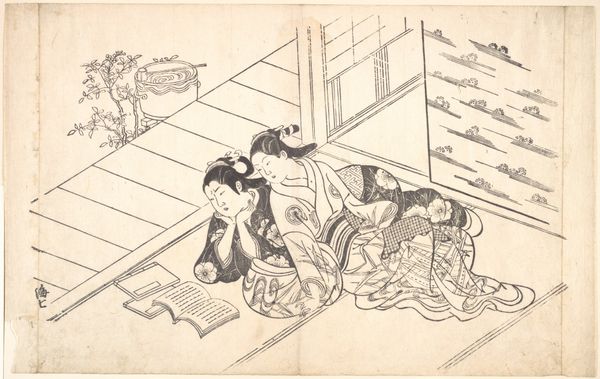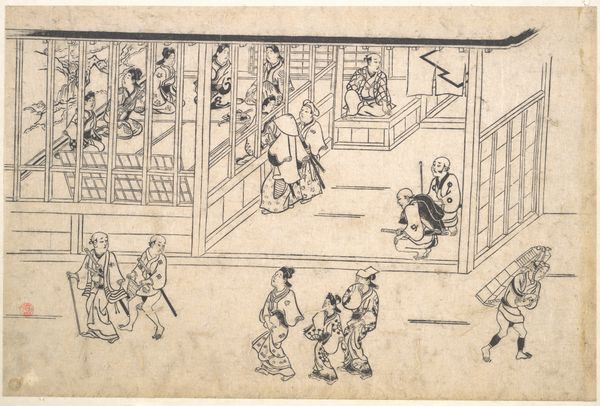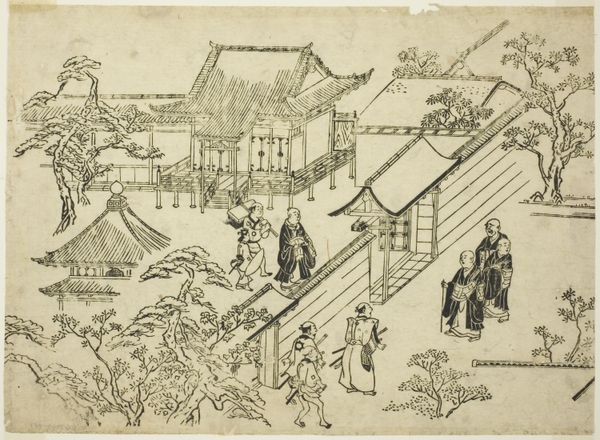
A Young Sanemori (Yaro Sanemori), no. 10 from a series of 12 prints depicting parodies of plays c. 1716s - 1726s
0:00
0:00
print, paper, woodblock-print
#
toned paper
# print
#
asian-art
#
ukiyo-e
#
figuration
#
paper
#
woodblock-print
#
genre-painting
Dimensions: 27.1 × 38.1 cm
Copyright: Public Domain
This print, made by Okumura Masanobu, presents a scene teeming with visual and theatrical cues. The most striking element is the deliberate staging, reminiscent of a theatrical set, with figures posed as if caught in a play. Note the recurring motif of the screen, a common device in Japanese art that serves as both a divider and a window, framing moments of intimacy and revelation. This recalls similar uses in Renaissance paintings, where windows and doorways often signify transitions and hidden truths. The figure wearing a large hat and elaborate garment is also a key symbol. It's echoes can be traced back to earlier depictions of travelers or pilgrims, laden with the weight of their journey, both literal and metaphorical. This imagery reflects a deep, subconscious yearning for transformation, seen across cultures and eras. These symbols aren't static; they evolve, reflecting society's changing values. The cyclical journey of symbols like the screen and the disguised figure highlights the enduring power of art to mirror and shape our collective consciousness.
Comments
No comments
Be the first to comment and join the conversation on the ultimate creative platform.
